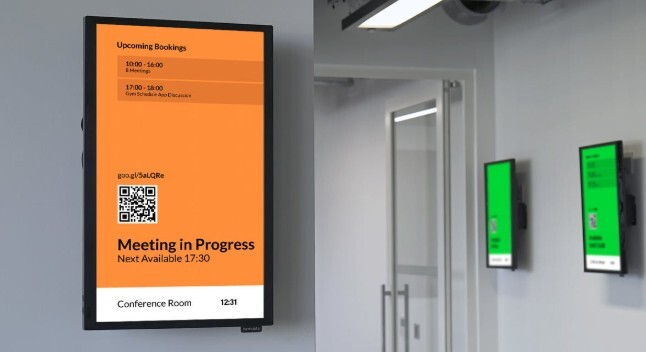React Native has a lot of benefits because it makes use of the same underlying technology as React. It also makes it possible to reuse the majority of the code, so developers can build apps much more quickly. This means that companies are able to build new apps much quicker than their competitors, which helps them stay ahead in the market.
The Best React Native Development Tools and Frameworks 2021
React Native is a framework that promotes the development of native mobile applications using JavaScript. It is one of the most popular cross-platform frameworks available in the market today. React Native has been used for developing apps ranging from Twitter to Facebook Messenger, Airbnb to Instagram, Skype to Uber, and many more.
The following are some of the best tools for developing React Native apps:
1) Expo – it is a development environment that runs on iOS and Android through an app installed on your smartphone
2) Create React App – it is an app generator that simplifies the process of React Native development by providing pre-built files with all needed packages
3) Codename One – it is a cross-platform mobile development ecosystem which uses Java for Android and Objective C for iOS

How to Get Started with React Native and Build Your First App
React Native is an open source framework to build native mobile apps with JavaScript. It allows you to build a mobile app for both Apple iOS and Android from the same codebase. React Native is a tool that lets you build an app in Xcode or Android Studio with JavaScript, reducing the time it takes to produce a working prototype by bypassing the need for native programming languages like Objective-C, Swift, and Java.
What are the Benefits of Using React Native over Traditional Mobile Development?
React native is a cross-platform open-source project for building native applications with Javascript. Here are the top three reasons why you should consider using React Native instead of a more traditional mobile development platform:
React Native is a JavaScript framework for building native mobile apps with JavaScript. It combines the best of web and mobile development to create the best of both worlds.
It has many benefits which are more than enough for developers to choose React Native over traditional mobile development.
1) Anytime, Anywhere – The first benefit of React Native is that it can be used anytime, anywhere because it runs on top of the web browser without any special plugins required. It offers scalability and seamless transitions with the use of live reloading which helps developers save time and focus on their code instead of worrying about compiling code.
2) Cross-platform – The second benefit is that it provides cross-platform UI rendering making it easier for developers to write code that works across multiple platforms like Android, iOS
3) React Is Using Native Technology
React Native for mobile development is a cross-platform framework that is built on top of the frameworks that are native to each respective mobile platform.
This means that React Native apps will have a native look and feel, and can access native mobile components and services.
This gets around the problem of the “webview” or “compatibility” layer that you would have with a hybrid app.
There are many benefits to using React Native in your development process. The most important benefit is that it is faster and easier for developers who are familiar with JavaScript, since they don’t have to learn specific languages for each platform.
React Native is a popular, open-source JavaScript framework for building native mobile apps.
The CLI is the main interface for developing React Native apps. It’s available as an npm package and can be installed by running npm install -g react-native-cli on your computer.
React Native uses JavaScript, so the CLI provides access to various JavaScript commands that can be executed from the command line. For example, you can use these commands to create new components, install additional packages, generate new screens, and run your app in an emulator or on a physical device.
This framework has been widely adopted by developers as it enables them to build cross-platform apps with the same codebase. Facebook, Instagram, and Skype are some of the most popular apps built with React Native.
Core features
– React: React is a JavaScript library for building user interfaces and it is used in React Native to render components
– Components: Components are the building blocks of the user interfaces and React Native has a wide variety of components
– Live Reload: The apps are automatically reloaded when the code is changed and users can see the changes in real time
– Code Sharing: The same codebase can be used to build both iOS and Android apps
– Cross Platform: Code reuse and

How to Create a React Native Application the Easy Way – the Complete Guide for Beginners
The first thing you need for React Native is to install a node and from there you can use the Node Package Manager (npm) to install additional third party dependencies. Note that installing from npm is very different from installing software, such as from a Windows installer file or from a .msi or zip installer. You need to run the commands from the Windows command prompt or from the Powershell or Bash terminal if you are using LINUX. Apart from npm, there are lots of other tools you can use to install dependencies like thread, Chocolatey, etc.
Then find a good IDE like Visual Studio, Sublime or Atom and install React extensions that will make your React programming easier. Then start reading about javascript, ES6, import, modules, pipelines, routers and the new syntax found in the latest javascript called ES6 that React uses as the let keyword, const, Promise, etc Programming for React is responsive and adaptive, so you have to think about all types of devices like mobile phones, tablets, surfaces, not just PCs and laptops.
A little reading on Bootstrap would be helpful here. Then you might want to go over the different UI frameworks that work with React, check out the MaterialUI framework used by Google.
Good luck with your React Native programming!
ERP vs CRM: Key Differences, Strengths, and How Clavis’ ERP Drives Organizational Success
In the digital age, businesses strive to leverage advanced tools to streamline operations, boost productivity, and foster better customer relationships. Two pivotal software solutions that play a significant role in achieving these goals are Enterprise Resource Planning (ERP) and Customer Relationship Management (CRM) systems. While these tools may seem similar at first glance, they serve distinct purposes and offer unique benefits, and it is important to understand why you may need one or the other—or both in tandem.
1. What is ERP?
ERP stands for Enterprise Resource Planning, a comprehensive software suite that manages and integrates core business processes. These processes often include:
- Finance and accounting
- Human resources
- Supply chain management
- Inventory and order management
- Manufacturing
ERP systems centralise business data, allowing various departments to collaborate seamlessly and make informed decisions based on real-time insights.
Core Features of ERP Systems
- Centralized Data Management: Consolidates information from all business departments into one platform.
- Process Automation: Automates repetitive tasks to improve efficiency.
- Scalability: Can grow with your business, accommodating new functionalities as needed.
- Compliance Support: Helps organisations meet regulatory requirements.
- Advanced Analytics: Provides detailed insights to support strategic decision-making.
2. What is CRM?
CRM, or Customer Relationship Management, is software that focuses on managing a company's interactions with current and potential customers. The primary goal of a CRM system is to improve customer satisfaction, retention, and acquisition through personalised communication and efficient management of sales and marketing activities.
Core Features of CRM Systems
- Contact Management: Maintains detailed records of customer interactions and preferences.
- Sales Pipeline Tracking: Manages leads and monitors the sales process.
- Marketing Automation: Facilitates email campaigns, social media management, and more.
- Customer Support: Enhances post-sale services through ticketing systems and live chats.
- Data-Driven Insights: Helps identify trends to fine-tune marketing and sales strategies.
3. ERP vs. CRM: Key Differences
While ERP and CRM are essential for business success, they cater to different aspects of operations.
|
Feature |
ERP |
CRM |
|
Primary Focus |
Internal processes and operational efficiency |
Customer interactions and relationships |
|
Key Functions |
Accounting, supply chain, HR, inventory |
Sales, marketing, customer service |
|
Target Audience |
Internal stakeholders |
Sales, marketing, and customer support teams |
|
Data Integration |
Focuses on consolidating operational data |
Specialises in customer-centric data |
|
Scalability |
Enterprise-wide |
Primarily focused on customer management |
4. The Strengths of ERP Systems
ERP systems are the backbone of operational efficiency. Their key strengths include:
- Holistic Business View: ERP provides a comprehensive view of business operations by integrating data across departments.
- Cost Reduction: Automating processes reduces manual labour and errors, saving time and money.
- Improved Compliance: Centralized data simplifies regulatory reporting and ensures adherence to standards.
- Inventory Optimization: Enhances inventory management, reducing waste and ensuring timely procurement.
- Agile Decision-Making: Real-time data insights help leaders make swift, informed decisions.
5. The Strengths of CRM Systems
CRM systems shine in the realm of customer relationship management, with benefits such as:
- Enhanced Customer Insights: Tracks and analyses customer preferences to tailor interactions.
- Improved Customer Retention: Personalization and timely communication foster loyalty.
- Streamlined Sales Processes: Automates lead management, reducing manual intervention.
- Marketing Optimization: Helps segment audiences for targeted campaigns.
- Boosted Collaboration: Facilitates alignment between sales and marketing teams.
6. ERP and CRM: Complementary Tools
Though distinct, ERP and CRM systems are complementary and often integrated to deliver maximum value. For instance:
- CRM manages the front-end relationship with customers, while ERP handles back-end processes like inventory and order fulfilment.
- Together, they provide a seamless flow of information, ensuring that customer-facing teams have accurate, up-to-date data on orders and services.
7. Clavis' ERP: The Ultimate Solution for Organizational Success
Clavis' ERP stands out as a robust ERP solution designed to address the multifaceted needs of modern businesses. Here’s how it can drive your organisation's success:
a) Comprehensive Integration
Clavis' ERP integrates seamlessly with existing systems, including CRM platforms, to unify your business processes.
b) Real-Time Data Analytics
With Clavis' ERP, decision-makers can access advanced analytics tools that offer actionable insights into performance, trends, and potential opportunities.
c) Tailored Functionality
Highly customisable to suit the unique needs of businesses across industries, Clavis' ERP works for all—from manufacturing to retail and more.
d) Enhanced User Experience
The platform boasts an intuitive interface, making it easy for employees to adopt and use effectively.
e) Cloud Capabilities
Leverage cloud-based deployment for flexibility, scalability, and cost savings.
9. Choosing the Right Solution for Your Business
When deciding between ERP and CRM—or opting for an integrated approach—consider the following:
- Business Goals: Identify whether your primary focus is operational efficiency (ERP) or customer relationships (CRM).
- Scalability: Choose a solution that can grow with your business.
- Budget: Evaluate the total cost of ownership, including deployment and maintenance.
- Customization: Ensure the platform can be tailored to your specific needs.
Final Thoughts
ERP and CRM systems are indispensable for businesses aiming to optimise operations and enhance customer relationships. While they serve distinct purposes, their integration offers unparalleled value. With Clavis' ERP, you gain a robust tool that streamlines your operations and integrates seamlessly with CRM systems to provide a holistic business solution.
Some other posts you might be interested in.

AI + RPA: The Ultimate Duo to Scale Your Business Faster and Smarter
Scaling a business isn’t just about doing more—it’s about doing more intelligently. As digital transformation redefines the modern enterprise, two technologies have emerged as transformative powerhouses: Artificial Intelligence (AI) and Robotic Process Automation...

Effortless and Effective Digital Signage for Every Organization with Clavisign
Explore how digital signage from Clavisign is transforming business communication and engagement.

15 Applications of Blockchain in Healthcare
"Blockchain" refers to a shared irreversible record of a chain of transactions, each of which is made up of one block, and which is held together by cryptographic keys ("hashes"). These keys or signatures are maintained in shared ledgers and connected by a network of...
